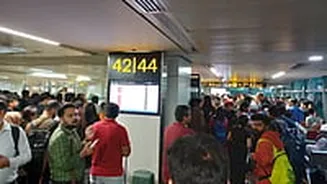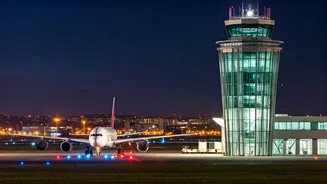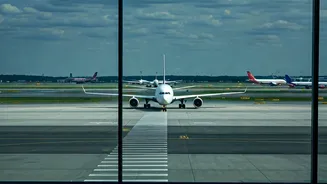Flight Operations Affected
The air traffic control (ATC) at Delhi's airport experienced a technical issue that caused major flight delays. The incident, which unfolded recently,
threw flight schedules into disarray. Airlines responded by making adjustments to their planned operations. This meant that flights were either delayed or subject to rescheduling. Passengers experienced inconvenience as they waited for updates on their flights. The ATC, responsible for managing air traffic, was working to resolve the issue promptly, aiming to restore the normal flow of flights.
Airlines Adapt Schedules
Following the technical malfunction at Delhi's air traffic control, various airlines were forced to make immediate changes to their flight schedules. These adjustments involved both postponing departure times and, in some instances, altering routes to minimize disruption. The goal was to efficiently manage the air traffic flow and reduce the number of passengers affected. These schedule changes are common during such incidents. Passengers were advised to keep checking for the latest updates on their flight status, either from the airlines or through airport announcements. The focus remained on minimizing the duration and impact of the delays to restore air travel services.
ATC's Remedial Action
In response to the technical problems, the air traffic control team at Delhi airport initiated immediate steps to rectify the issue. The primary focus was on identifying the root cause of the glitch. Once the cause was determined, the technical team worked swiftly to implement the necessary solutions and repairs. The aim of this work was to stabilize the ATC systems and restore their full functionality. Continuous monitoring was in place to ensure that the systems were operating as expected, and that the disruptions would be brought to an end. Updates were shared with airlines and related stakeholders on the progress.
Passenger Experience Impact
The technical issue caused significant inconvenience and frustration for air travelers. Passengers faced delays in departures and arrivals, and these changes disrupted their travel plans. Some faced having to re-book, which meant more time at the airport. Airlines, in an attempt to address the negative impact, kept passengers updated on their flight statuses, through frequent announcements and digital channels. Many passengers were also provided with assistance, such as refreshments or alternative travel arrangements, when necessary. The objective was to minimize passenger distress and assist them during the disruption.
Long-Term System Review
Following the resolution of the technical issue at Delhi's air traffic control, authorities began an in-depth review of the incident. The objective of this review was to understand the causes behind the failure and to prevent similar occurrences in the future. Experts would analyze the ATC systems, software, and operational protocols. The aim was to find areas for improvement in existing infrastructure and protocols, with a focus on enhancing the overall resilience of the ATC. This comprehensive review included potential upgrades, updated maintenance schedules, and additional training for the personnel, as part of efforts to improve aviation safety and efficiency.















